Can you safely drink the water in San Jose? According to the City’s latest Consumer Confidence Report, which contaminants affect the quality of the water? And do any of these contaminants violate EPA Guidelines or the Safe Drinking Water Act?
We’ve discussed everything you need to know about the safety and quality of San Jose tap water in this guide.
📌 Key Takeaways:
- The drinking water in San Jose, California is considered generally safe to drink.
- The City of San Jose’s water contains a number of contaminants in low concentrations that don’t surpass EPA Maximum Contaminant Levels.
- The 5 biggest problem contaminants in San Jose tap water are arsenic, disinfection byproducts, chromium-6, nitrate, and nitrite.
Table of Contents
- 🚰 Can You Drink San Jose Tap Water?
- 🗺️ Where Does the Tap Water in San Jose Come From?
- 📉 Who Regulates San Jose Drinking Water?
- 🧪 San Jose Annual Water Quality Report
- ☣️ Contaminants Found Above Guidelines in Tap Water in San Jose
- 🧫 Main Contaminants Found in San Jose Tap Water
- ⛲ San Jose Drinking Water in Public Places
- 💬 Frequently Asked Questions
🚰 Can You Drink San Jose Tap Water?
Yes, you can drink San Jose tap water. The City’s water is treated to reduce contaminants and kill microorganisms, greatly minimizing its potential health effects.
The EPA has established drinking water standards for a number of contaminants that are deemed to have health effects at certain concentrations. San Jose’s tap water contains only trace amounts of these contaminants – lower than the EPA’s maximum allowances.
According to the most recent EPA ECHO database, the San Jose water utility doesn’t violate the SDWA, and the compliance history database shows that the utility only had 1 SDWA violation in the past 10 years – this being in April 2017, for Monitoring and Reporting – E Coli.
So, the drinking water in San Jose is legally safe to drink, but it’s not completely clean or healthy.
You might believe – like many of the folks who petition for better-quality tap water – that the EPA’s regulations are outdated and don’t reflect the true danger of some of the contaminants in our drinking water. The EPA has Maximum Contaminant Levels (MCLs) for many contaminants, but some people think these MCLs should be higher – and a number of the most dangerous contaminants in water aren’t currently regulated.
One organization that believes the EPA’s regulations are too lenient is the Environmental Working Group (EWG), which has conducted its own research and established strict Health Guidelines for contaminants present in drinking water.
In the EWG’s Tap Water Database for the City of San Jose, we can see that 15 contaminants exceed the EWG’s Health Guidelines (more on these contaminants later).
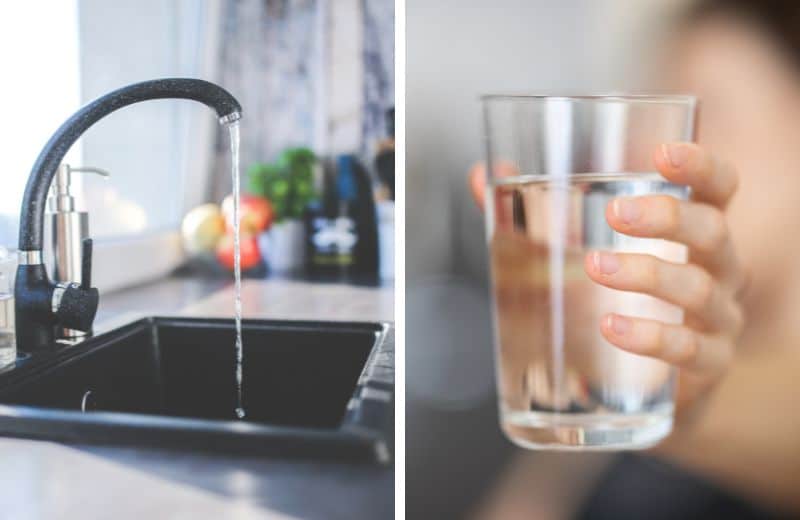
Does lead affect the safety of the tap water in San Jose? Luckily, no – not for most folks, anyway.
According to San Jose Water, the City doesn’t have lead pipes, and San Jose residents are only likely to have lead in their water if they have a lead gooseneck – the short pipe that connects the main water distribution system to individual homes and businesses.
The City’s water utility conducts regular testing to monitor lead levels across the water distribution system, and the test results are available online for public viewing. The utility also sent letters to San Jose residents who potentially had lead in their water due to its service records, and plans to replace all lead goosenecks within the next decade.
Keep in mind that lead isn’t just found in service lines – if you have a home built before 1978, lead may leach into your water from your own plumbing system.
👉 Extra reading: These 10 states have the worst water quality – find out why.
San Jose SDWA Violations Within 10 Years
| Period of Compliance | Resolved? | Health-Based? | Category Code | Code | Rule Code | Contaminant Code | Rule Group Code | Rule Family Code |
|---|---|---|---|---|---|---|---|---|
| 04/01/2017 | Yes | No | Monitoring and Reporting (MR) | Monitoring, Source Water (GWR) (34) | Ground Water Rule (140) | E. COLI (3014) | Microbials (100) | Groundwater Rule (140) |
Data Source: EPA ECHO database
🗺️ Where Does the Tap Water in San Jose Come From?
The drinking water source in San Jose differs in different service areas. Evergreen, Edenvale & Coyote Valley, Alviso/North San Jose, all get their water from different locations.
Evergreen Water Source
The water in Evergreen is delivered from Valley Water in Santa Clara. Most of the water comes from the following surface water sources:
- Lake Del Valle
- South Bay Aqueduct
- San Luis Reservoir
All of these water sources are supplied by the Sacramento-San Joaquin Delta watershed.
There are a couple of local water sources in the District, too: the Calero Reservoir and the Anderson Reservoir. Water is pumped from these reservoirs to the Santa Teresa Water Treatment Plant.
Edenvale & Coyote Valley Water Source
In Edenvale and Coyote Valley, 100% of the drinking water is supplied by the Santa Clara Valley Groundwater Basin. This water comes from numerous deep-water wells beneath the City.

Alviso/North San Jose
Alviso/North San Jose residents get their water from the San Francisco Public Utilities Commission (SFPUC). Most of this water supply comes from the Hetch Hetchy Watershed, which is mainly fed by snowmelt flowing into the Tuolumne River.
Additionally, water pumped to the San Francisco Public Utilities Commission is sourced from the Santa Clara and Almeda watersheds, and local reservoirs, which collect rainfall and surface water runoff.
Water is treated at the Sunol Valley Water Treatment Plant before it’s distributed to homes.
Some of San Jose’s drinking water is surface water, and some is groundwater. Groundwater is generally cleaner than surface water because it’s less susceptible to pollution caused by agricultural and urban runoff, and contamination from the atmosphere and rainfall.
Although water around San Jose is treated at different plants, the water treatment process is essentially the same across all Districts.
Most Districts use chloramine (a combination of chlorine and ammonia) to disinfect drinking water, and filter the water with processes including coagulation, flocculation, sedimentation, and physical filtration. Fluoride is also added to San Jose drinking water to support dental health.
Once water has been treated at the water treatment plant, it’s delivered to homes and businesses in the City’s various community water systems.
📉 Who Regulates San Jose Drinking Water?
The City of San Jose drinking water is regulated by the Environmental Protection Agency (EPA) and managed by one of three organizations:
- The City of San Jose Water Company, which owns and operates the San Jose Municipal Water System
- San Jose Water Company (a privately-owned company)
- Great Oaks Water Company (a privately-owned company)
If you don’t already know, the first step is to find out who provides your water.
Here, we’ve looked at the City of San Jose water quality, but you can find EWG Tap Water Databases for the other water companies here:
Regardless of where you get your water, all public water systems have one thing in common: they must all adhere to regulations set by the Environmental Protection Agency (EPA).
That means reducing contaminants down to concentrations that don’t exceed the EPA’s Maximum Contaminant Levels (EPA) and ensuring, according to the EPA’s protective water regulations, that water is potable and safe to drink, and that drinking water quality remains consistent.
Under the Unregulated Contaminant Monitoring Rule (UCMR), the EPA also monitors large public water systems for the presence of contaminants that don’t currently have health-based standards.
Water utilities must monitor and test their water regularly. Many of these test results are shared publicly online – visit your water provider’s website or send them an email if you can’t find what you’re looking for.
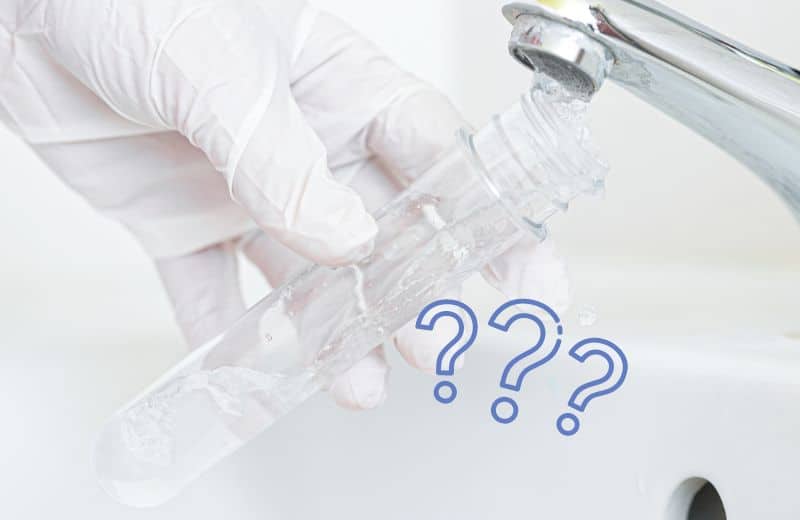
🧪 San Jose Annual Water Quality Report
There are various Water Quality Reports produced for San Jose tap water, depending on the water provider and treatment plant.
Here, we’ve shared information from the City of San Jose Water Company 2021 Water Quality Report, from January to December 2021.
You can find links to the Water Quality Reports for the two other water providers in the City below:
The Report shares information you might want to know about San Jose’s drinking water, including where the water is sourced, what it contains, how it’s treated to make it safe to drink, and how the contaminant levels compare to EPA maximum allowances. There are separate sections in the Report’s tables that apply to different service areas, giving an overview of the water quality for each.
According to the Report, none of the contaminants detected in San Jose tap water exceed the EPA’s Maximum Contaminant Levels. However, these contaminants are still present – which means that the water isn’t completely clean or pure.
For example, Edenvale groundwater contained an average of 2.5 PPB of arsenic in 2021, which is below the EPA’s MCL of 10 PPB – but you’d probably prefer not to drink even trace amounts of this carcinogenic chemical contaminant in your water.
Some of the contaminants listed in the Report include:
- Arsenic
- Barium
- Fluoride
- Nitrate
- Selenium
- Total trihalomethanes
- Bromate
- Chloramine
Many of these contaminants weren’t detected in some service areas, but were detected in others. We recommend reading through the Water Quality Report to learn which contaminants specifically affect your drinking water supply.
Keep in mind that the EPA occasionally reevaluates and updates its regulations, so the 2021 Water Quality Report is only applicable to the given year.
| Term | Description |
|---|---|
| Period of Compliance | Time period which a violation took place and resolved. |
| Status | Indication of the most recent compliance status of the violation. Resolved: The system has returned to compliance from the violation Archived: The violation is not yet resolved, but is more than 5 years past its compliance end date. Addressed: The violation is not resolved nor archived, but addressed through formal enforcement. Unaddressed: The violation has not been addressed, resolved, nor archived |
| Health Based | Whether the violation affects health standards. |
| Category Code | Category of violation by which it is reported. TT: Treatment Technique Violation MRDL: Maximum Residual Disinfectant Level Other: Other Violation MCL: Maximum Contaminant Level Violation MR: Monitoring and Reporting MON: Monitoring Violation RPT : Reporting Violation |
| Code | A complete description of violation codes. |
| Contaminant Code | Represents a contaminant for which the municipal water system has incurred a violation against a primary drinking water regulation. |
| Rule Code | The National Drinking Water rule. 110: Total Coliform Rule 121: Surface Water Treatment Rule 122: Long Term 1 Enhanced Surface Water Treatment Rule 123: Long Term 2 Enhanced Surface Water Treatment Rule 130: Filter Backwash Rule 140: Ground Water Rule 210: Stage 1 Disinfectants and Disinfection Byproducts Rule 220: Stage 2 Disinfectants and Disinfection Byproducts Rule 230: Total Trihalomethanes 310: Volatile Organic Chemicals 331: Nitrates 332: Arsenic 333: Inorganic Chemicals 320: Synthetic Organic Chemicals 340: Radionuclides 350: Lead and Copper Rule 410: Public Notice Rule 420: Consumer Confidence Rule 430: Miscellaneous 500: Not Regulated 111: Revised Total Coliform Rule |
| Rule Group Code | Uniquely defines a rule group. 120: Surface Water Treatment Rules 130: Filter Backwash Rule 140: Groundwater Rule 210: Stage 1 Disinfectants and Disinfection Byproducts Rule 220: Stage 2 Disinfectants and Disinfection Byproducts Rule 230: Total Trihalomethanes 310: Volatile Organic Chemicals 320: Synthetic Organic Chemicals 330: Inorganic Chemicals 340: Radionuclides 350: Lead and Copper Rule 400: Other 500: Not Regulated 110: Total Coliform Rules 410: Public Notice Rule 420: Consumer Confidence Rule 430: Miscellaneous |
| Rule Family Code | Defines the rule family code. 100: Microbials 200: Disinfectants and Disinfection Byproducts Rule 300: Chemicals 400: Other 500: Not Regulated |
☣️ Contaminants Found Above Guidelines in Tap Water in San Jose
We know that San Jose tap water is legally safe to drink because none of its contaminants exceed MCLs set by the Environmental Protection Agency.
However, if you agree with the EWG that the EPA’s MCLs are too high, you’ll be interested to know which contaminants in your drinking water exceed the stricter EWG Health Guidelines:*
*Remember, the information in this section only applies to the water distributed by the City of San Jose Water Company. We’ve shared links to EWG Tap Water Databases for the San Jose Water Company and the Great Oaks Water Company in our “Who Regulates San Jose Drinking Water?” section.
Arsenic
Arsenic is a highly toxic contaminant and confirmed carcinogen that is naturally present in the earth’s crust. Short-term exposure to this contaminant may cause vomiting and diarrhea, while long-term exposure may cause cancer, numbness and tingling of the extremities, and even death. San Jose water contains 0.117 PPB (parts per billion) of arsenic – that’s 29x the EWG’s recommended Health Guideline of 0.004. The official legal limit for arsenic in tap water is 10 PPB.
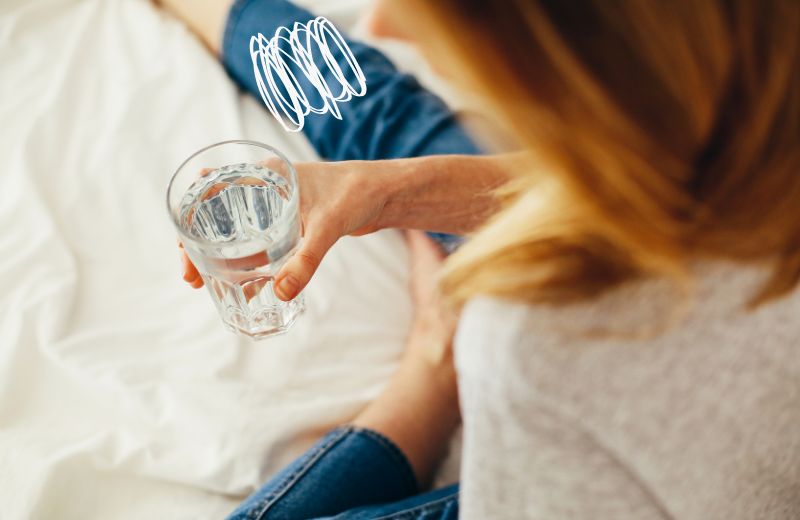
Haloacetic acids (HAA5)† and Haloacetic acids (HAA9)†
Two types of haloacetic acids – HAA5 and HAA9 – are commonly formed as a byproduct of chemical disinfection. These contaminants may increase the risk of bladder, rectal, colon, and liver cancer. 6.30 PPB and 8.33 PPB of HAA5 and HAA9 were detected in San Jose tap water – between 63 and 139x the EWG’s Health Advisories of 0.1 PPB and 0.06 PPB. The current EPA MCL for HAA5 is 60 PPB, while HAA9 has no legal limit.
Hexavalent Chromium
Hexavalent chromium (or chromium-6) is a toxic form of chromium, and may cause liver damage and allergic dermatitis if consumed in excess in tap water. 3.62 PPB of hexavalent chromium was detected in San Jose water – 181x the EWG’s Health Guideline of 0.02 PPB. The EPA doesn’t currently have a specific MCL for chromium-6 – only “total chromium” (combining chromium-3 and chromium-6) is regulated.
Nitrate and Nitrite
Nitrate and nitrite are soluble compounds of nitrogen and oxygen that may cause nausea, headaches, increased heart rate, and methemoglobinemia (blue baby syndrome) in large quantities. 1.70 PPM (parts per million) of nitrates and nitrites were detected in San Jose tap water – 12x the EWG’s Health Guideline of 0.14 PPM but well within the legal limit of 10 PPM.
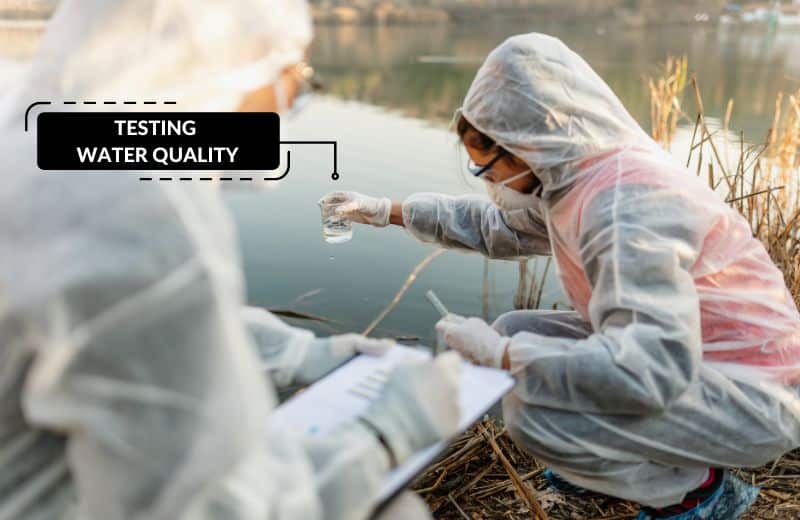
Total trihalomethanes (TTHMs)†
Total trihalomethanes (TTHMs) are also produced as a result of disinfection with chlorine or similar chemicals. TTHMS increase the risk of various cancers, including colon and bladder cancers. 37.5 PPB of TTHMs were detected in San Jose drinking water – 250x the EWG’s recommended Health Guideline of 0.15 PPB. The EPA enforcement for this contaminant is much higher: 80 PPB.
Other Disinfection Byproducts
Other disinfection byproducts, including bromochloroacetic acid, bromodichloromethane, bromoform, chloroform, dibromoacetic acid, dibromochloromethane, dichloroacetic acid, and trichloroacetic acid, were detected in quantities ranging from 0.717 PPB to 12.3 PPB – 7.2 to 124x the EWG’s Health Guidelines (which differ depending on the contaminant in question). These disinfection byproducts currently aren’t regulated by the EPA, despite their known effects on the human body.
Like so many municipalities in the US, disinfection byproducts are an unavoidable outcome of community water treatment. Chemical disinfection is affordable and easily accessible, making it the most popular option for large-scale public water disinfection.
Many of these contaminants aren’t regulated by the EPA, so they’re not filtered out at the treatment plant. Luckily, there are water filters you can use at home to remove them.
🧫 Main Contaminants Found in San Jose Tap Water
We’ve covered the contaminants present in potentially concerning levels in San Jose tap water – now let’s look more broadly at the contaminants that are present in acceptable levels (according to both the EPA and the EWG):
- 1,1,1-Trichloroethane – An organic solvent and type of volatile organic compound (VOC); considered toxic and hazardous and may dizziness, headaches, poor coordination, and hypotension if large amounts are consumed in water.
- Aluminum – A non-toxic element that is readily absorbed by the human body; exposure to low levels isn’t harmful but ingesting large quantities could cause mouth and skin ulcers, vomiting, diarrhea, and arthritic pain.
- Barium – A non-toxic metal that sometimes naturally occurs in food and water; drinking excess barium in water may cause nausea, diarrhea, vomiting, abdominal cramps, muscle weakness, and fluctuating blood pressure.
- Disinfection byproducts including bromochloromethane, chlorate, and monobromoacetic acid – Occur in water due to chlorine or other disinfectants reacting with organic matter; may damage the liver or increase cancer risk in large amounts.
- Fluoride – A mineral that’s commonly synthetically produced and added to municipal drinking water supplies to support dental health; not considered harmful in low levels but high concentrations may cause dental fluorosis (especially in young children).
- Manganese – A mineral that contributes to water hardness; its presence in water is often linked to limescale buildup, soap scum and poor soap lathering, and skin and hair irritation.
- Molybdenum – A trace element and micronutrient for animals and plants; may cause headache, loss of appetite, fatigue, and muscle and joint pain if very high levels are ingested.
- Total chromium – Both of the common forms of chromium in water: chromium-3 (or trivalent chromium, mostly harmless) and chromium-6 (or hexavalent chromium, much more harmful and may cause cancer and allergic dermatitis in humans).
- Strontium – A heavy metal with similar properties to calcium; may replace calcium in the bones and disrupt their normal structure if consumed in excess.
- Vanadium – A metal that occurs naturally in the ground and leaches into water from fossil fuel erosion and soil deposits; doesn’t affect health if low levels are ingested.
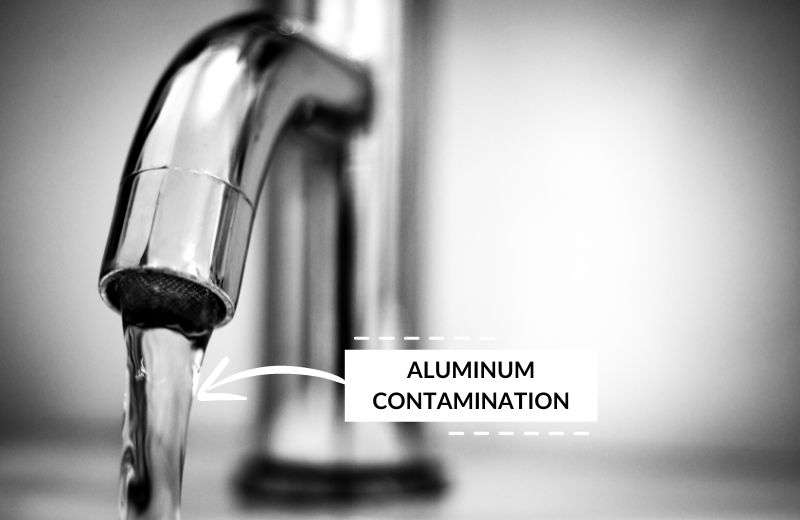
⛲ San Jose Drinking Water in Public Places
You get the same drinking water in public places (such as bars, hotels, and restaurants), as you do in your home’s faucets in San Jose.
Restaurants and bars are not legally required to provide you with free tap water, but most will do so on request.
Clean drinking water isn’t guaranteed in bathroom sinks in hotel rooms. If your room doesn’t have a dedicated water dispenser and you’re unsure of the quality or safety of your bathroom tap water, ask a member of staff. If the hotel has a bar, you should be able to get free tap water from here.
There are some public drinking water fountains in San Jose, but many folks avoid these due to concerns over the water quality.
If you don’t want to drink San Jose public water, you can buy bottled water from your nearest grocery store, including bottled water that has been treated with water filtration. However, drinking bottled water is bad for the environment, so we don’t recommend making a habit of this.
💬 Frequently Asked Questions
Is there lead in San Jose water?
No – according to San Jose water, there is no lead in the pipes transporting water around the City, so the water shouldn’t contain lead. However, some homes and businesses may have a lead gooseneck (the pipe that connects the main water distribution system to the individual property), and some old homes might have plumbing made from lead pipes. Lead is incredibly toxic, so test your water if you’re concerned it may contain this metal.
Why is water quality an issue in San Jose?
Some folks may consider water quality an issue in San Jose – despite the fact that the water is legally safe to drink – because there are trace amounts of disinfection byproducts, arsenic, hexavalent chromium, and other contaminants with health effects. These contaminants are supposedly reduced to safe concentrations in the water, but you would probably prefer not to drink them at all.
Can we drink tap water in San Jose?
Yes, you can drink tap water in San Jose because the city’s municipal water supply has been treated to make it safe and potable. However, being safe and healthy are not the same thing – water might be legally safe to drink, but it may still taste poor and contain trace contaminants.
Can I drink water from the sink in San Jose?
Yes, you can drink water from the sink in San Jose. However, it might not be safe to drink water from a bathroom sink. It’s common for bathroom plumbing (especially old plumbing) to contain lead and other heavy metals that could leach into water, making it dangerous to drink. Test your water if you’re unsure.
How is San Jose tap water disinfected?
Most of the drinking water in San Jose is disinfected with chloramine, a combination of chlorine and ammonia that’s considered more effective than chlorine alone. This chemical is also less reactive with organic matter than chlorine and produces fewer disinfection byproducts, making it safer to use in drinking water.
Does San Jose tap water contain fluoride?
Yes, San Jose tap water is fluoridated. The City was one of the later cities in the US to fluoridate its water, and began using the additive in 2016. Fluoride is present naturally in the ground, but it’s also artificially added to water to provide additional dental health benefits and reduce costs associated with dental work. The mineral is controversial because it may have health effects if ingested in large amounts.
Is San Jose water hard or soft?
San Jose water is very hard and has a high mineral content. The City has a range of water hardness from 172 to 522 PPM (according to the City’s latest Water Quality Report), which is classed as “very hard” or “extremely hard”. Hard water is safe to drink, but San Jose residents might notice signs of hard water including mineral deposits, dry skin and hair, and poor lather with soap.

